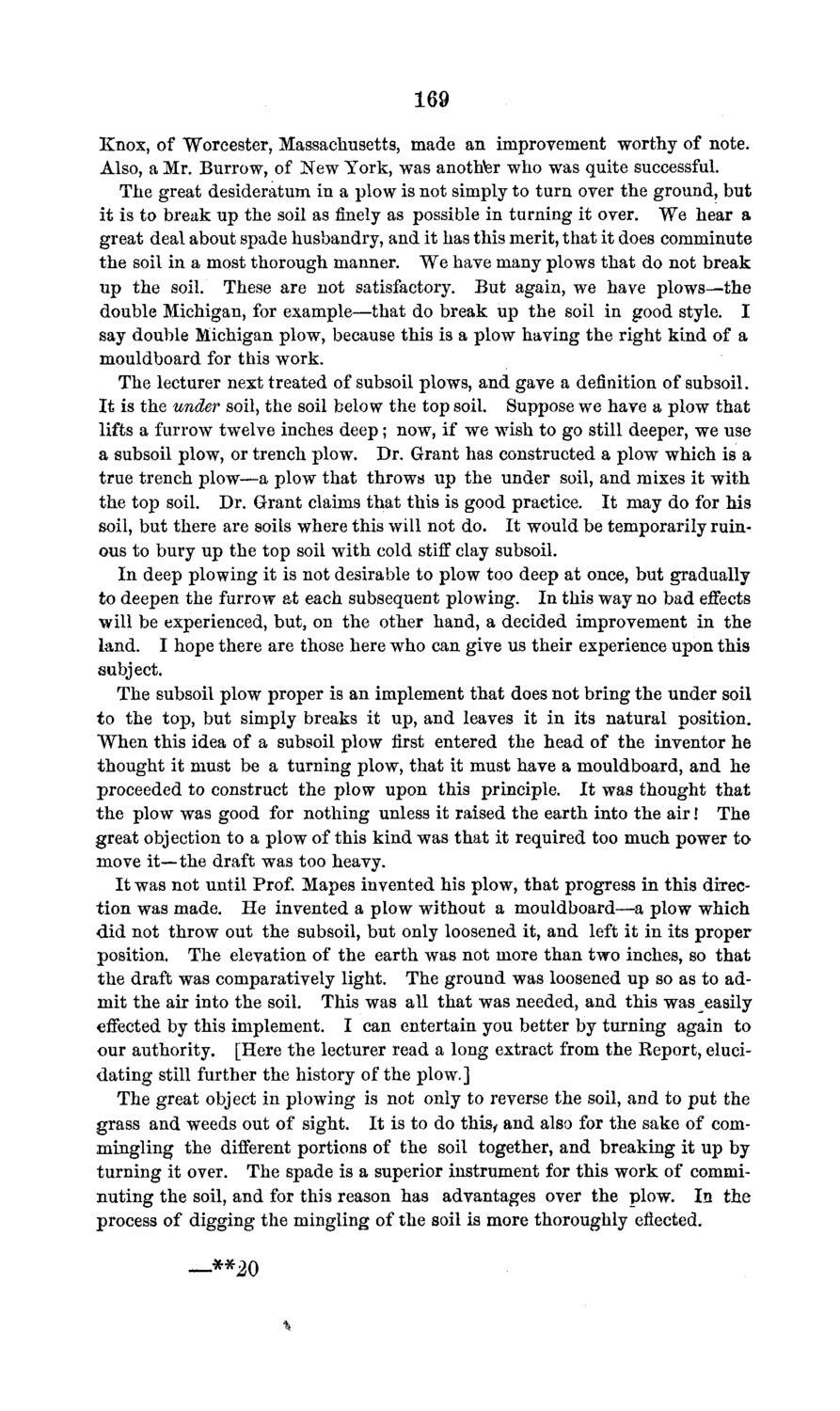| |
| |
Caption: Board of Trustees Minutes - 1869
This is a reduced-resolution page image for fast online browsing.

EXTRACTED TEXT FROM PAGE:
169 Knox, of Worcester, Massachusetts, made an improvement worthy of note. Also, a Mr. Burrow, of New York, was another who was quite successful. The great desideratum in a plow is not simply to turn over the ground, but it is to break up the soil as finely as possible in turning it over. We hear a great deal about spade husbandry, and it has this merit, that it does comminute the soil in a most thorough manner. We have many plows that do not break up the soil. These are not satisfactory. But again, we have plows—the double Michigan, for example—that do break up the soil in good style. I say double Michigan plow, because this is a plow having the right kind of a mouldboard for this work. The lecturer next treated of subsoil plows, and gave a definition of subsoil. It is the under soil, the soil below the top soil. Suppose we have a plow that lifts a furrow twelve inches deep; now, if we wish to go still deeper, we use a subsoil plow, or trench plow. Dr. Grant has constructed a plow which is a true trench plow—a plow that throws up the under soil, and mixes it with the top soil. Dr. Grant claims that this is good practice. It may do for his soil, but there are soils where this will not do. It would be temporarily ruinous to bury up the top soil with cold stiff clay subsoil. In deep plowing it is not desirable to plow too deep at once, but gradually to deepen the furrow at each subsequent plowing. In this way no bad effects will be experienced, but, on the other hand, a decided improvement in the land. I hope there are those here who can give us their experience upon this subject. The subsoil plow proper is an implement that does not bring the under soil to the top, but simply breaks it up, and leaves it in its natural position. When this idea of a subsoil plow first entered the head of the inventor he thought it must be a turning plow, that it must have a mouldboard, and he proceeded to construct the plow upon this principle. It was thought that the plow was good for nothing unless it raised the earth into the air! The great objection to a plow of this kind was that it required too much power to move it—the draft was too heavy. It was not until Prof. Mapes invented his plow, that progress in this direction was made. He invented a plow without a mouldboard—a plow which did not throw out the subsoil, but only loosened it, and left it in its proper position. The elevation of the earth was not more than two inches, so that the draft was comparatively light. The ground was loosened up so as to admit the air into the soil. This was all that was needed, and this was easily effected by this implement. I can entertain you better by turning again to our authority. [Here the lecturer read a long extract from the Report, elucidating still further the history of the plow.] The great object in plowing is not only to reverse the soil, and to put the grass and weeds out of sight. It is to do this, and also for the sake of commingling the different portions of the soil together, and breaking it up by turning it over. The spade is a superior instrument for this work of comminuting the soil, and for this reason has advantages over the plow. In the process of digging the mingling of the soil is more thoroughly effected. —**20 %
| |